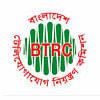Reforming the telecom licensing policy: loose ends that need tightening

The proposed Telecommunication Network & Licensing Regime Reform Policy 2025 marks a welcome shift toward a more streamlined, modern telecom ecosystem in Bangladesh. It includes several forward-thinking provisions but also contains critical ambiguities that must be resolved for the policy to drive sustainable, inclusive sectoral growth.
A standout progressive clause is Section 7.2.7, which permits access network service providers (ANSPs) to share both active and passive infrastructure. This is a sensible, cost-efficient move: network sharing reduces redundant capital expenditure and eases pressure on foreign reserves by limiting repeat infrastructure imports and real estate usage.
In a resource-constrained economy with growing urban density, such efficiencies are not just desirable—they are essential. Fewer roadworks and construction projects will also reduce public disruption, enhancing urban livability.
Section 7.2.9 takes a step in the right direction by aiming to prevent vertical integration abuses. However, it fails to explicitly prohibit cross-shareholding across telecom value chain layers. Without such provisions, dominant players can exploit loopholes and entrench their market power. In this context, clarity isn't optional—it's crucial.
Conversely, Section 7.4.6 is commendably clear, barring cellular mobile service providers (CMSPs) from holding fixed telecom service provider (FTSP) licences—a firm stance against horizontal integration. Still, the language could be refined: if CMSPs are to be barred from offering any overlapping services with FTSPs, that must be spelled out to prevent ambiguity.
Section 7.5 also needs clarification. It's unclear whether FTSPs may obtain fixed satellite service (FSS) licences. The criteria for these licenses must be clearly defined, including whether local distributors require a separate licence or only need to register with the regulator. Similarly, Section 7.3.2 vaguely defines cellular mobile standards. References to ITU benchmarks like IMT-2020 (5G) must be made explicit. Given the complexity of ITU standards, investors deserve precise guidance on applicability and compliance.
The draft also lacks a coherent stance on foreign direct investment (FDI). While majority foreign ownership may be allowed for some licence categories, like national infrastructure connectivity service providers (NICSPs), it remains silent on foreign ownership thresholds (whether majority means some local ownership is required) for them or for ANSPs, while capping it at 49 percent for international connectivity service providers (ICSPs).
This inconsistency undermines investor confidence. If the goal, per Section 2.5, is to foster local entrepreneurship, ownership rules should either be applied consistently or justified individually. For instance, full foreign ownership might be warranted for capital-intensive and state-of-the-art technologies like FSS ventures, while majority local ownership could be mandated for district-level FTSPs to promote homegrown entrepreneurs and enable tech transfer through equity partnerships.
The CMSP licence class poses a strategic dilemma. While openness to foreign investment is vital, overreliance on foreign capital risks excluding domestic players from a sector of national significance. Grameenphone showcases a successful model of blended ownership. Policymakers must now decide whether to preserve this balance, allow further foreign dominance, or ideally, evolve toward inclusive economic participation.
Another critical issue lies in how non-geostationary satellite operators (NGSOs) are handled—currently grouped under FTSPs. This is conceptually flawed. NGSO services like Starlink use entirely different access technologies and should be regulated under a distinct ANSP licence class.
This category needs tailored provisions for retail, billing, compliance, and consumer protection. Importantly, when primary subscribers redistribute connectivity, KYC compliance must be mandatory, ensuring regulatory parity with other ANSPs.
A recent comment by the special assistant to the chief adviser at MoPTICT, suggesting customers may need a no objection certificate (NOC) for FSS connectivity, raises further concerns. Does this imply BTRC approval will be needed for all new connections, or will FSS providers face a different process? The draft NGSO guidelines offer no clarity.
Finally, Section 7.6 introduces flexibility for telecom-enabled services but undermines it with a vague "enlistment" requirement. Regulatory adaptability is essential for innovation—but vagueness is not. Enlistment should either be mandatory or explicitly optional. Leaving it undefined invites bureaucratic discretion and potential misuse.
A more pragmatic approach would be to let licensed ANSPs assume regulatory responsibility for the services they enable, sparing individual providers from unnecessary red tape. This would foster innovation while allowing the regulator to focus on service quality and consumer protection.
In conclusion, the draft telecom licensing policy is a welcome move toward modernisation. But to be truly transformative, it needs sharper articulation in key areas: FDI policy, licensing structure, service classification, and ownership rules.
As we overhaul a decades-old system—potentially for the next 10 to 20 years—our policy must be not just forward-looking, but coherent, inclusive, and transparent, designed to attract investment while empowering local innovation.

 For all latest news, follow The Daily Star's Google News channel.
For all latest news, follow The Daily Star's Google News channel. 




Comments